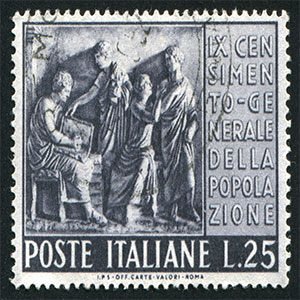 One of the cornerstones of Big Data architecture is processing referred to as the “Roman Census approach”. By using the Roman census approach a Big Data architecture can accommodate the processing of almost unlimited amounts of data.
One of the cornerstones of Big Data architecture is processing referred to as the “Roman Census approach”. By using the Roman census approach a Big Data architecture can accommodate the processing of almost unlimited amounts of data.
When people first hear the “Roman census approach” it appears to be counter-intuitive and unfamiliar. The reaction most people have is – “and just exactly what is a Roman census approach?” Yet the approach – architecturally – is at the core of the functioning of Big Data. And – surprisingly – it turns out that many people are much more familiar with the Roman census approach than they ever realized.
Once upon a time the Romans decided that they wanted to tax everyone in the Roman empire. But in order to tax the citizens of the Roman empire the Romans first had to have a census. The Romans quickly figured out that trying to get every person in the Roman empire to march through the gates of Rome in order to be counted was an impossibility. There were people in North Africa, in Spain, in Germany, in Greece, in Persia, in Israel, and so forth. Not only were there a lot of people in far away places, trying to transport everyone on ships and carts and donkeys to and from the city of Rome was simply an impossibility.
So the Romans realized that creating a census where the processing (i.e., the counting, the taking of the census) was done centrally was an impossibility. The Romans solved the problem by creating a body of “census takers”. The census takers were organized in Rome and then were sent all over the Roman empire and on the appointed day a census was taken. Then, after taking the census, the census takers headed back to Rome where the results were tabulated centrally.
In such a fashion the work being done was sent to the data, rather than trying to send the data to a central location and doing the work in one place. By distributing the processing, the Romans solved the problem of creating a census over a large diverse population.
Many people don’t realize that they are very familiar with the Roman census method and don’t know it. You see there once was a story about two people – Mary and Joseph – who had to travel to a small city – Bethlehem – for the taking of a Roman census. On the way there Mary had a little baby boy – named Jesus – in a manger. And the shepherds flocked to see this baby boy. And Magi came and delivered gifts. Thus born was the religion many people are familiar with – Christianity. The Roman census approach is intimately entwined with the birth of Christianity.
The Roman census method then says that you don’t centralize processing if you have a large amount of data to process. Instead you send the processing to the data. You distribute the processing. In doing so you can service the processing over an effectively unlimited amount of data.
